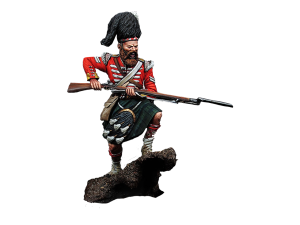The Optio was the closest collaborator of the centurion, who chose him personally, he had specific tasks, which ranged from keeping daily assignments and services up to date to checking the actual availability of the manpower.
Below the centurions there was a complex and articulated hierarchy, composed both of simple legionaries who however enjoyed higher pay or various immunities, and of personnel who we could define as “non-commissioned officers”.
In fact, among the tasks of the Optio there was also that of verifying the alignment of the men and the solidity of the formation, for this reason, each optio carried a long stick with a pommel on top, which was used to push the legionaries into their place and verify the correct disposition of each.
Other tasks of the Optio were to command roll calls and to record the strength, or the availability of personnel day after day.
The Optio was also responsible for daily deliveries: for this purpose, he carried a small pocket on his belt where he kept the wax tablets with the passwords, tasks, services and agenda marked on them. In addition to these specific tasks, the Optio had to be ready to take the place of his superior at any time, particularly if the centurion was no longer able to exercise his authority in battle.
The institution of the optio was widespread in every area of the Roman military system, from the legions to the auxiliary troops, to the cavalry, to the navy. Obviously the centurion/optio pairing was also present among the departments of the Praetorian Guard.
There could be an optio centuriae (deputy commander of a centuria), an Optio equitem (deputy of a cavalry truma), Optio speculatorum (deputy of a cavalry department of the guard).
The Optio could also be entrusted with particular services: to cite a few examples, the optio ordinis was responsible for the prison, the Optio valetudinarii for the hospital, the optio tribuni was a collaborator of the tribunes of the legion.
To carry out these tasks he received double the pay compared to that of simple legionaries (he was therefore a duplicarius). Particular attention was paid to the choice of Optio, the legionnaire destined to become Optio was of tall stature, expert in combat techniques, reliable, disciplined, ready to follow orders.
He had to be endowed with a natural aptitude for command, being responsible for the correct alignment in formation of the men and their discipline.
The Optio could also be entrusted with particular services: to cite a few examples, the optio ordinis was responsible for the prison, the optio valetudinarii of the hospital, the optio tribuni was a collaborator of the tribunes of the legion.
To carry out these tasks he received double the pay compared to that of simple legionaries (he was therefore a duplicarius). Particular attention was paid to the choice of Optio, the legionnaire destined to become optio was of tall stature, expert in combat techniques, reliable, disciplined, ready to follow orders.
He had to be endowed with a natural aptitude for command, being responsible for the correct alignment of the men in formation and their discipline.
| Peso | 0,130 kg |
|---|---|
| Dimensioni | 12 × 7 × 4 cm |
| sculpted by | Renato Benigna |
| painted by | Renato Benigna |
Up-Sells Products
-
-
Corporal 93th Highlander, Argyll & Sutherland
40,00 €Corporal 93th Highlander, Argyll & Sutherland 75mm metal kit figure – cod. FRV-043
-
British 17th Lancers, Upoko River – Zulu War, 1879
59,00 €British 17th Lancers, Upoko River – Zulu War, 1879 54mm metal kit, 2 figures – cod. FRV-035
Related Products
-
-
-
-
Saracen Raid IX cent.
50,00 €Il prezzo originale era: 50,00 €.40,00 €Il prezzo attuale è: 40,00 €.Saracen Raid IX cent., 2 figures – cod. FRV-036



















Recensioni
Ancora non ci sono recensioni.